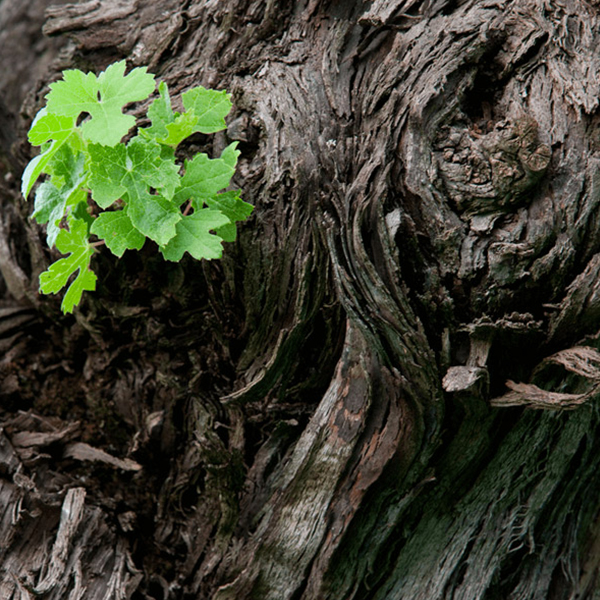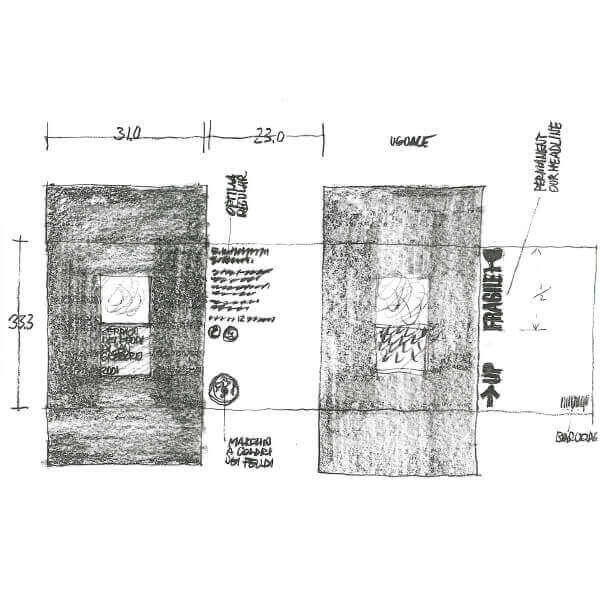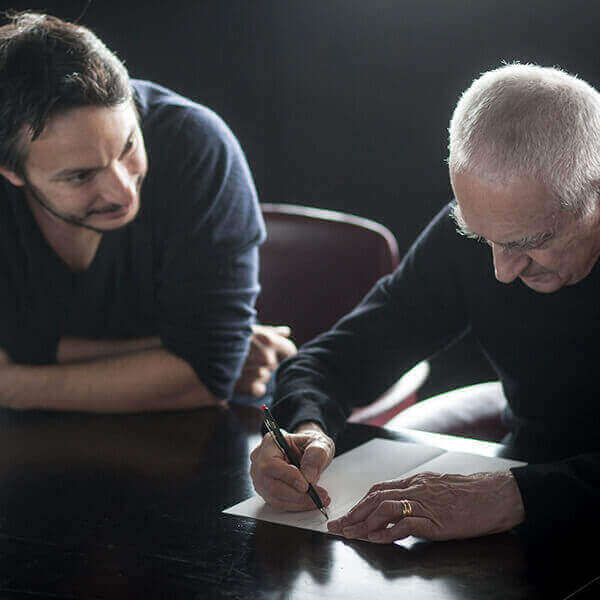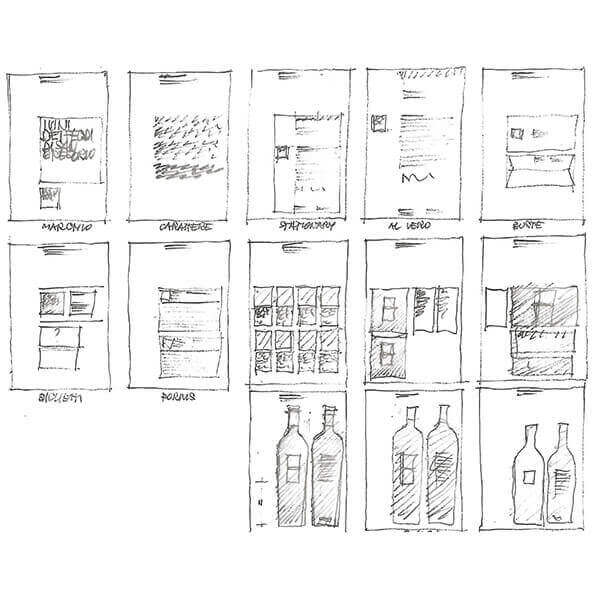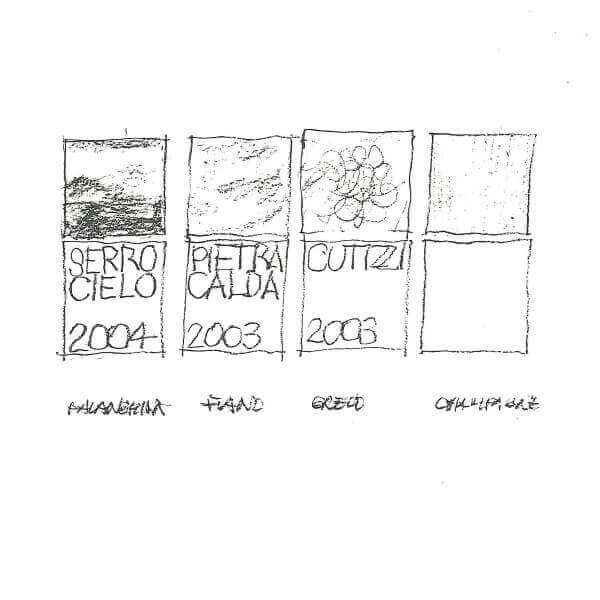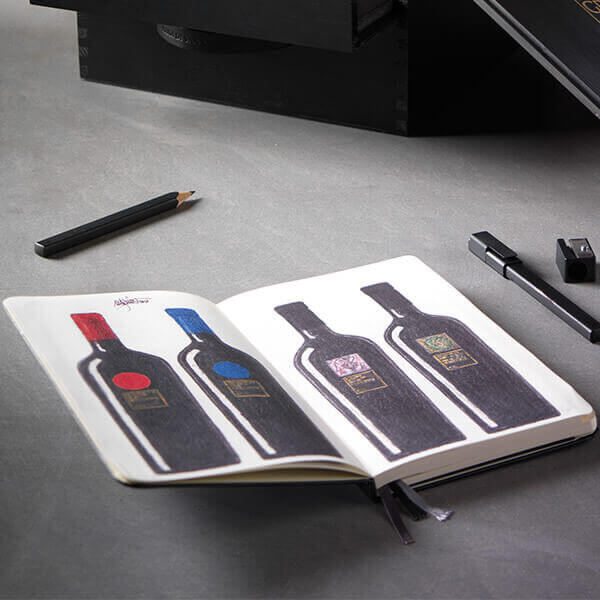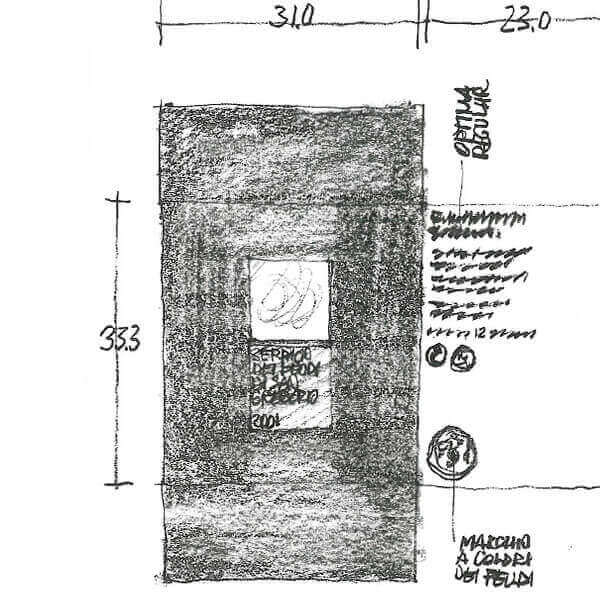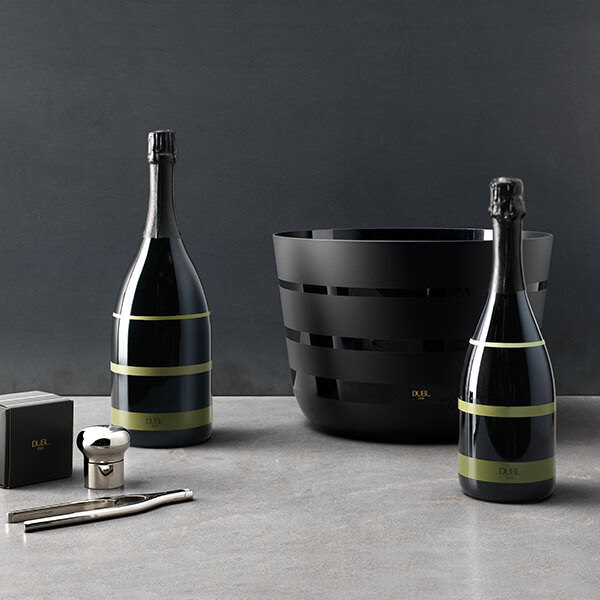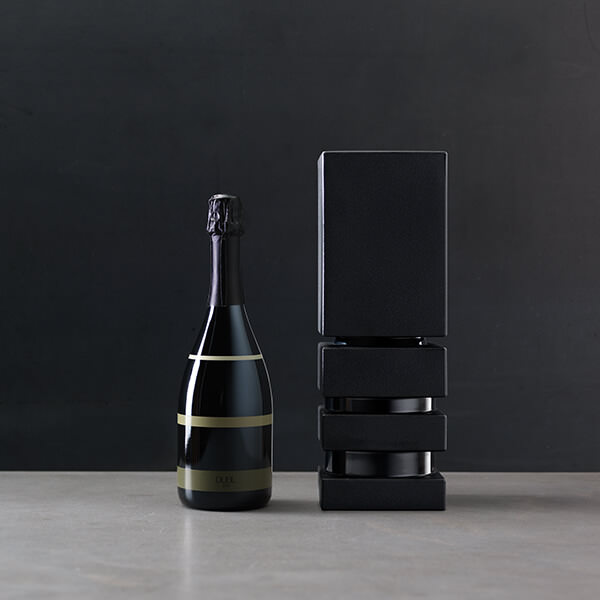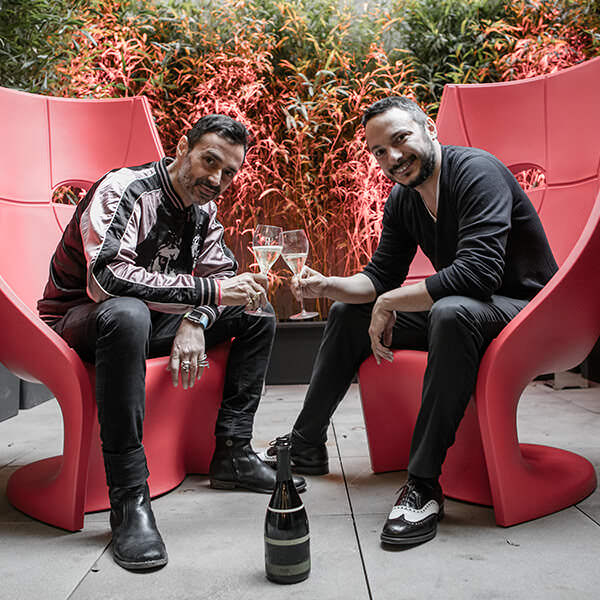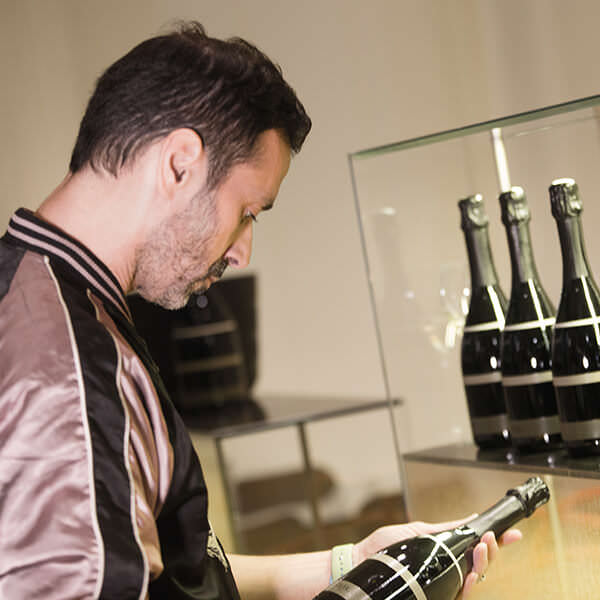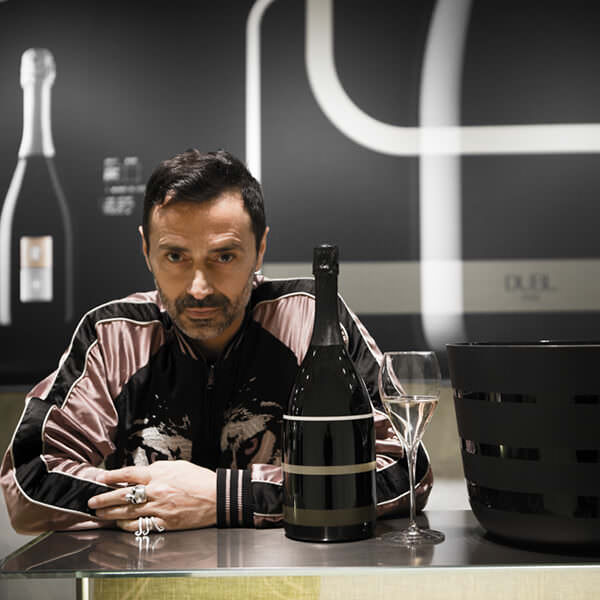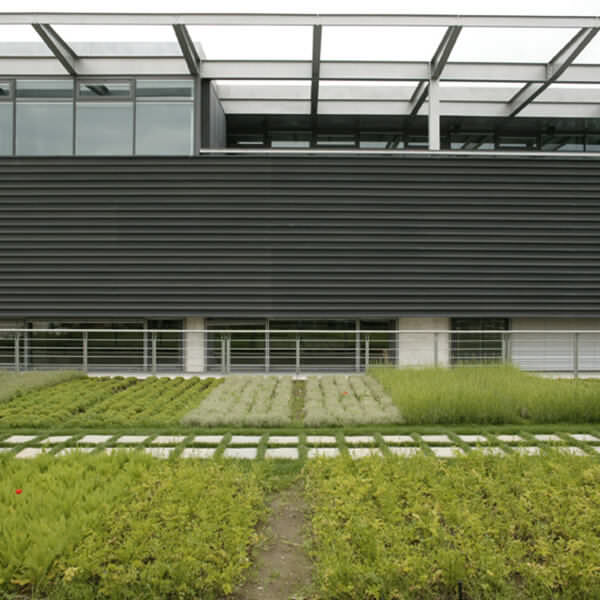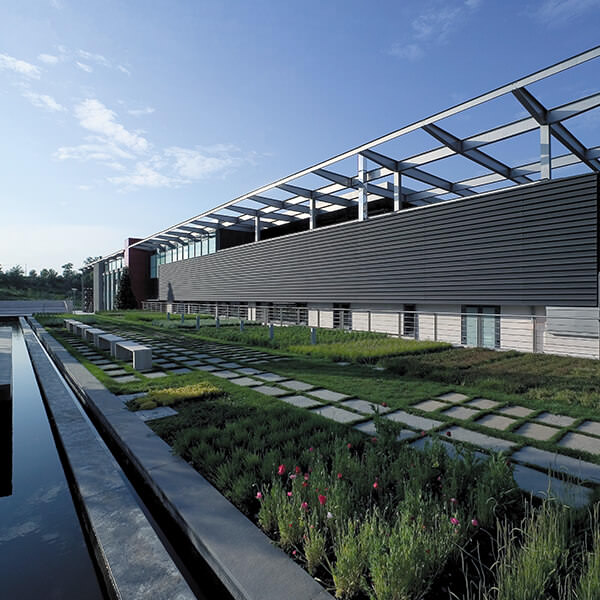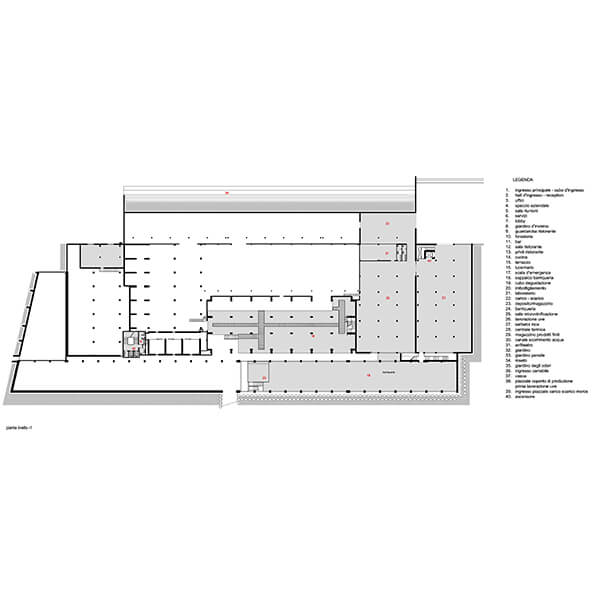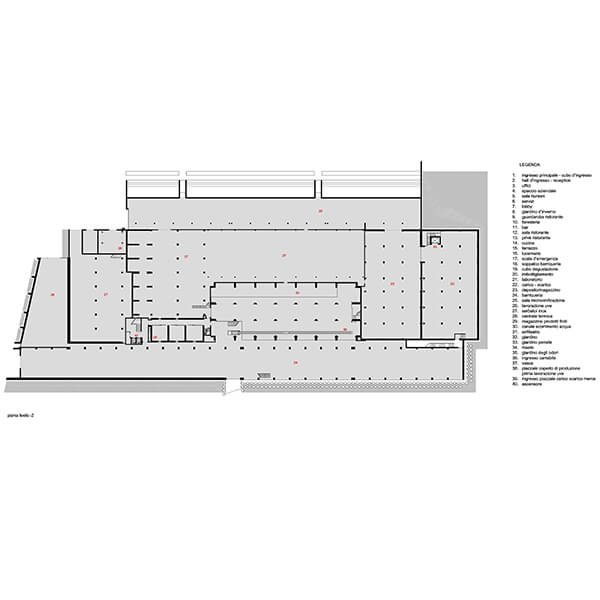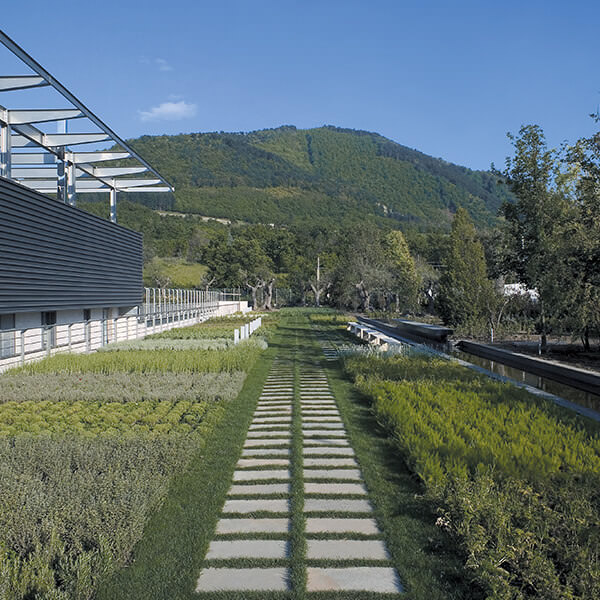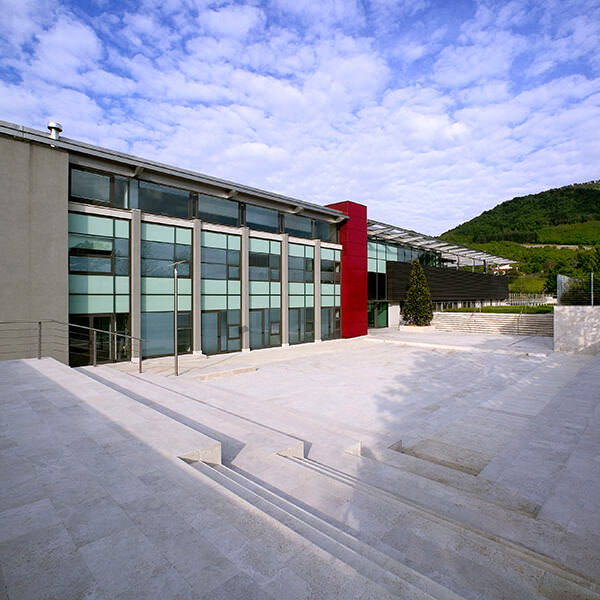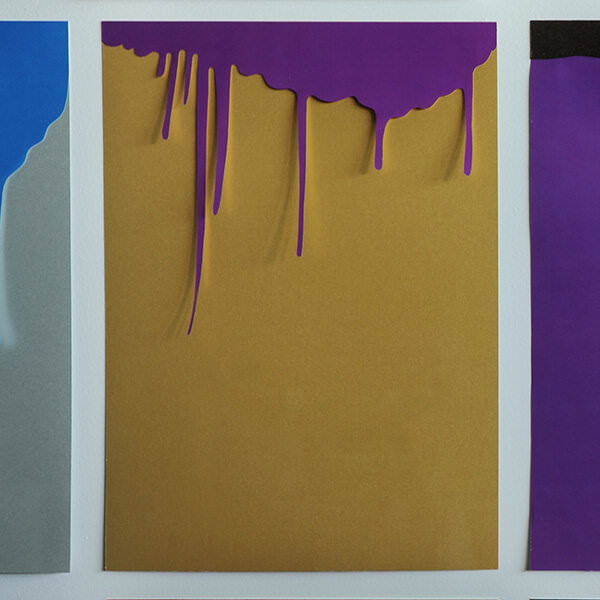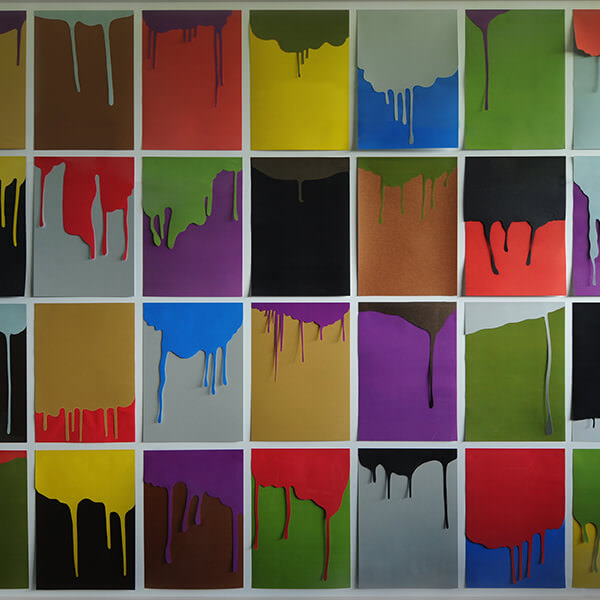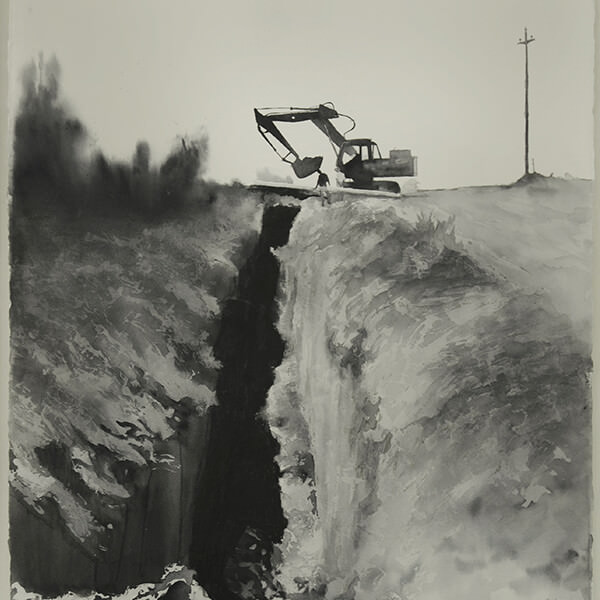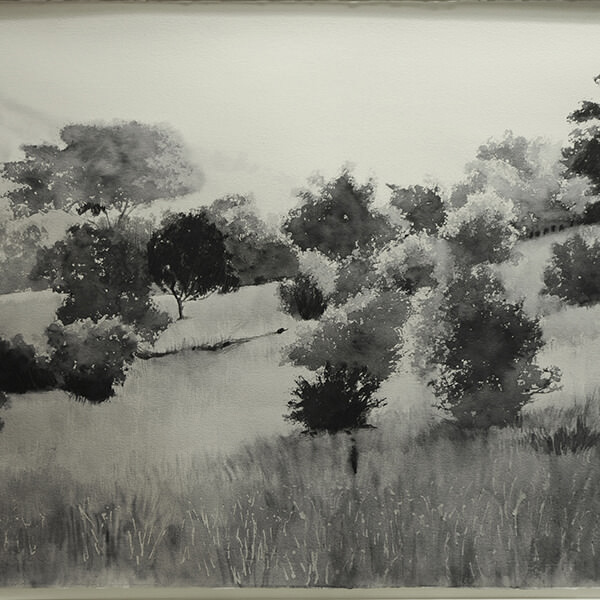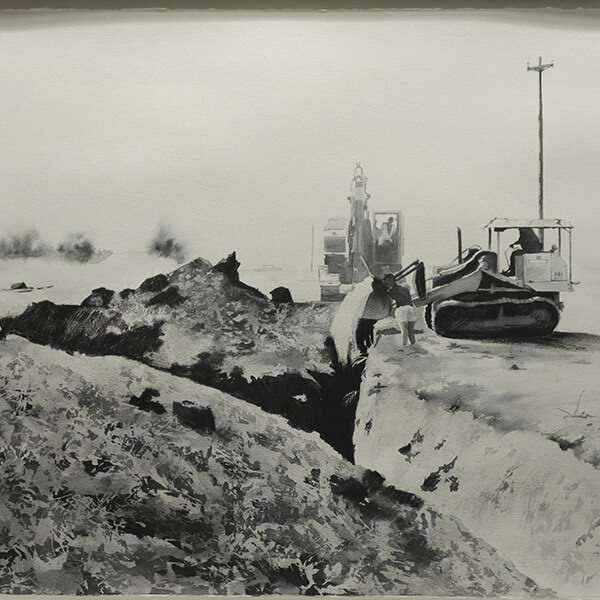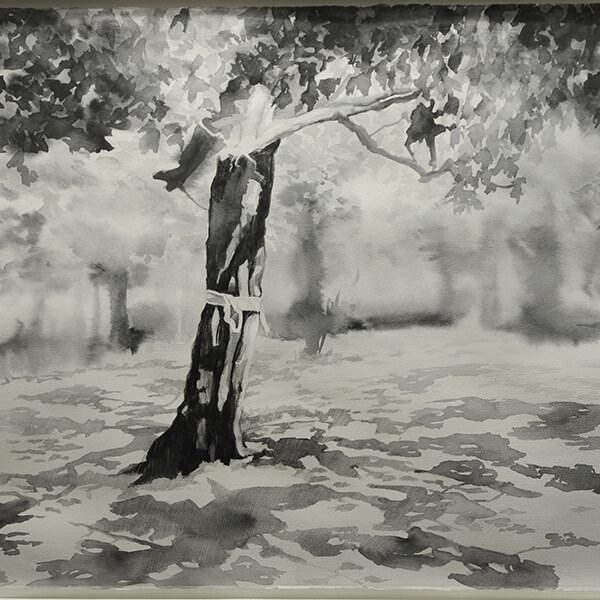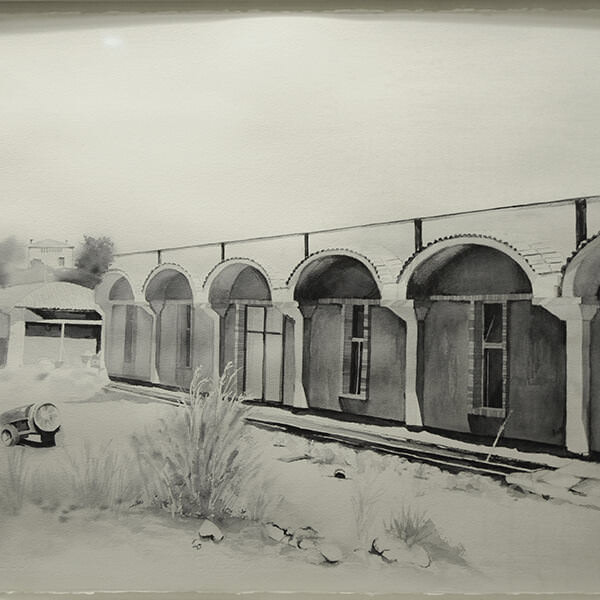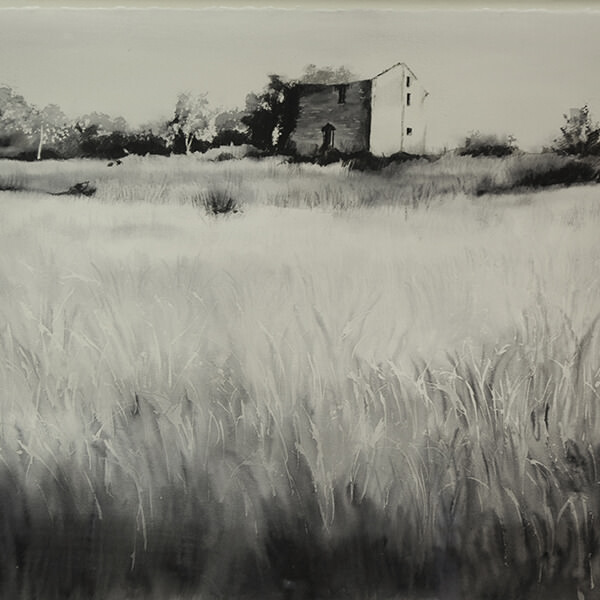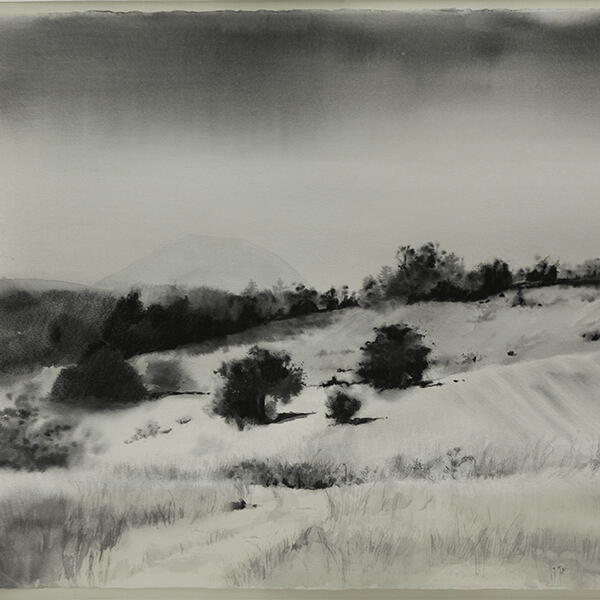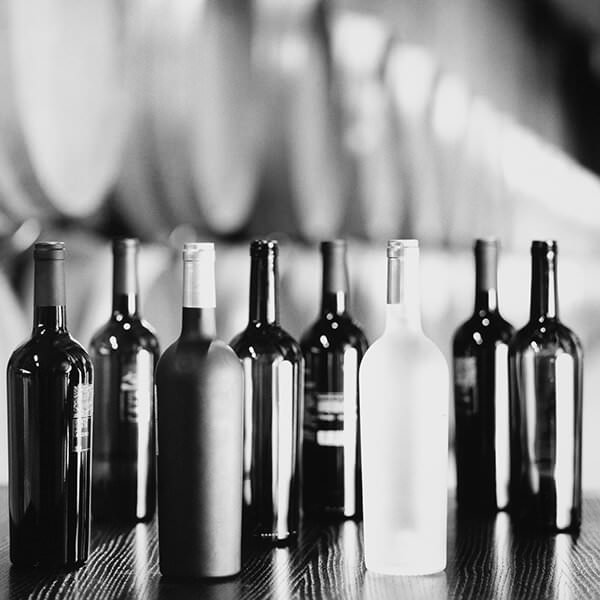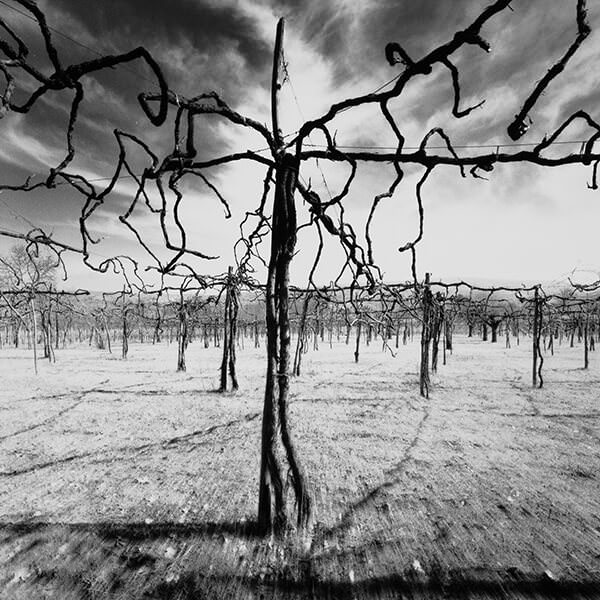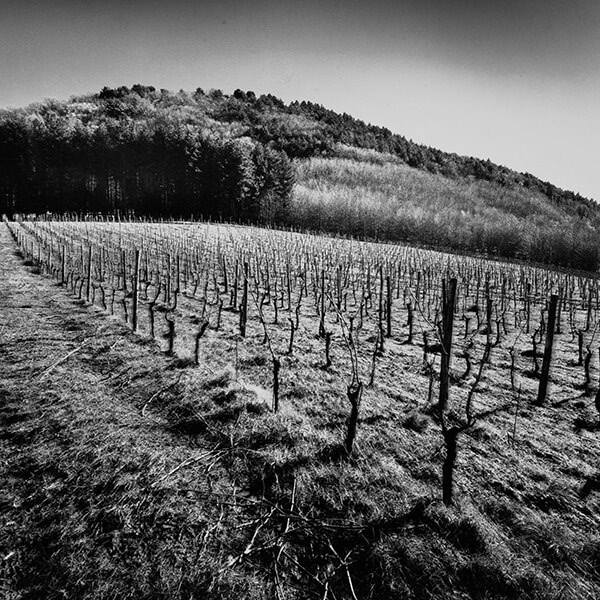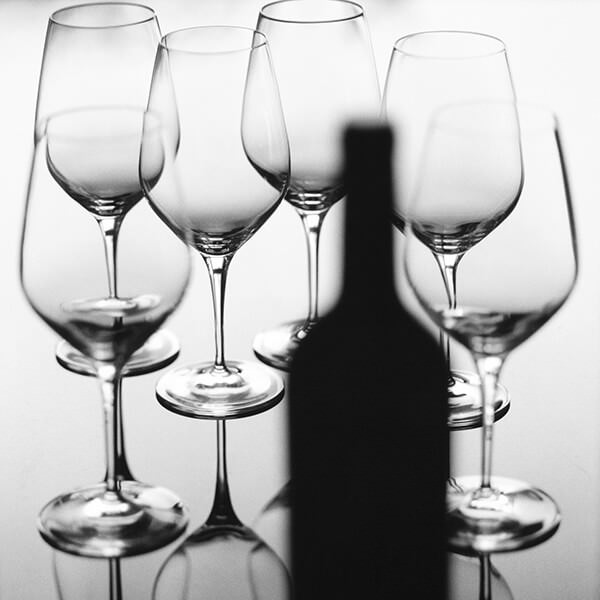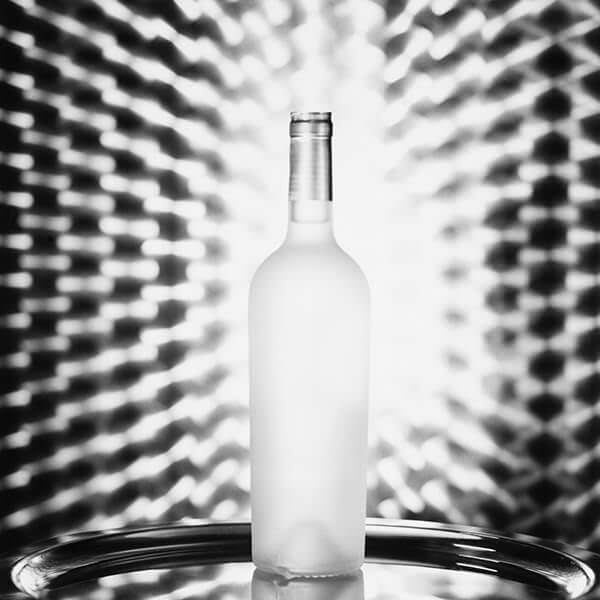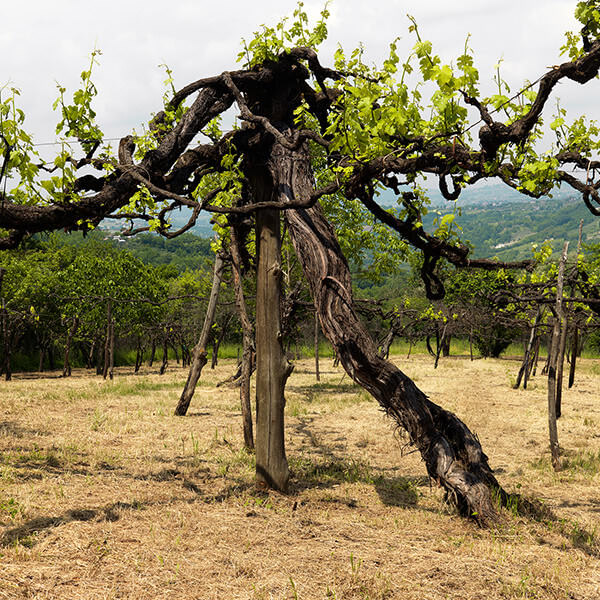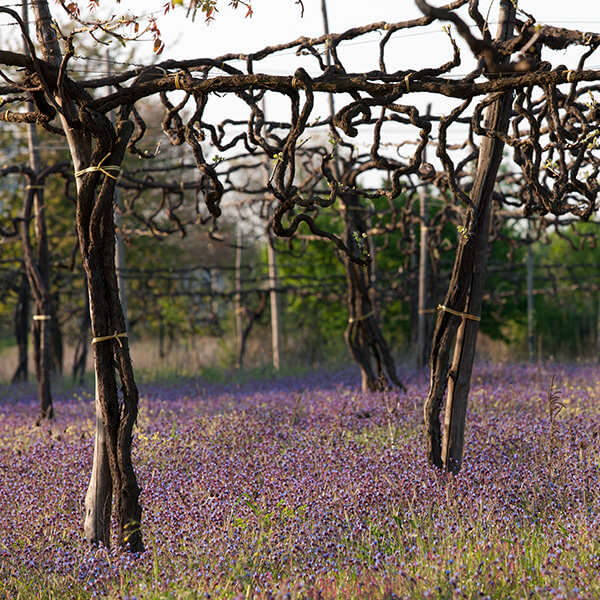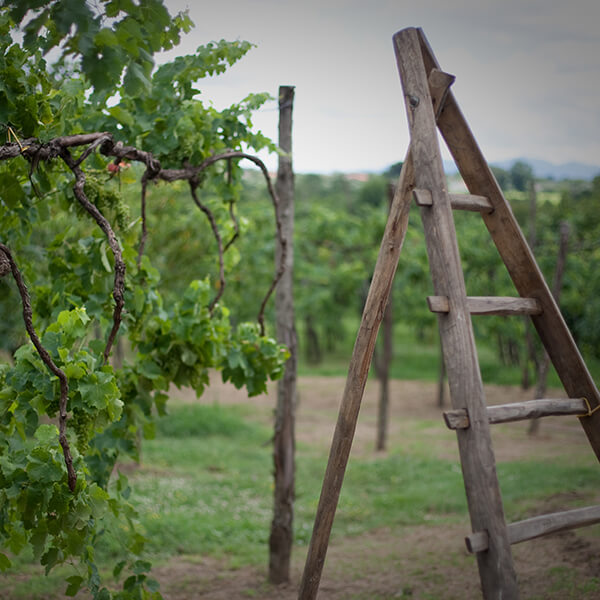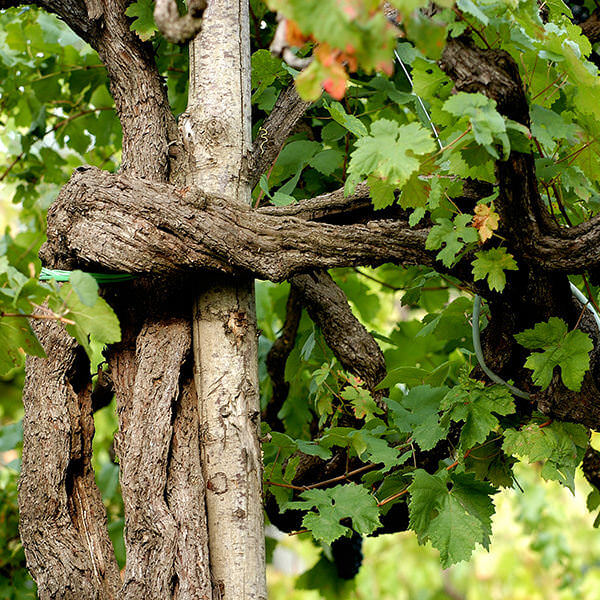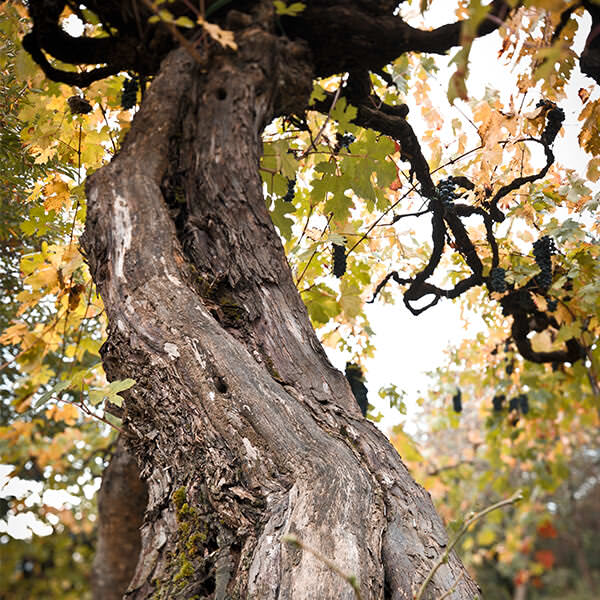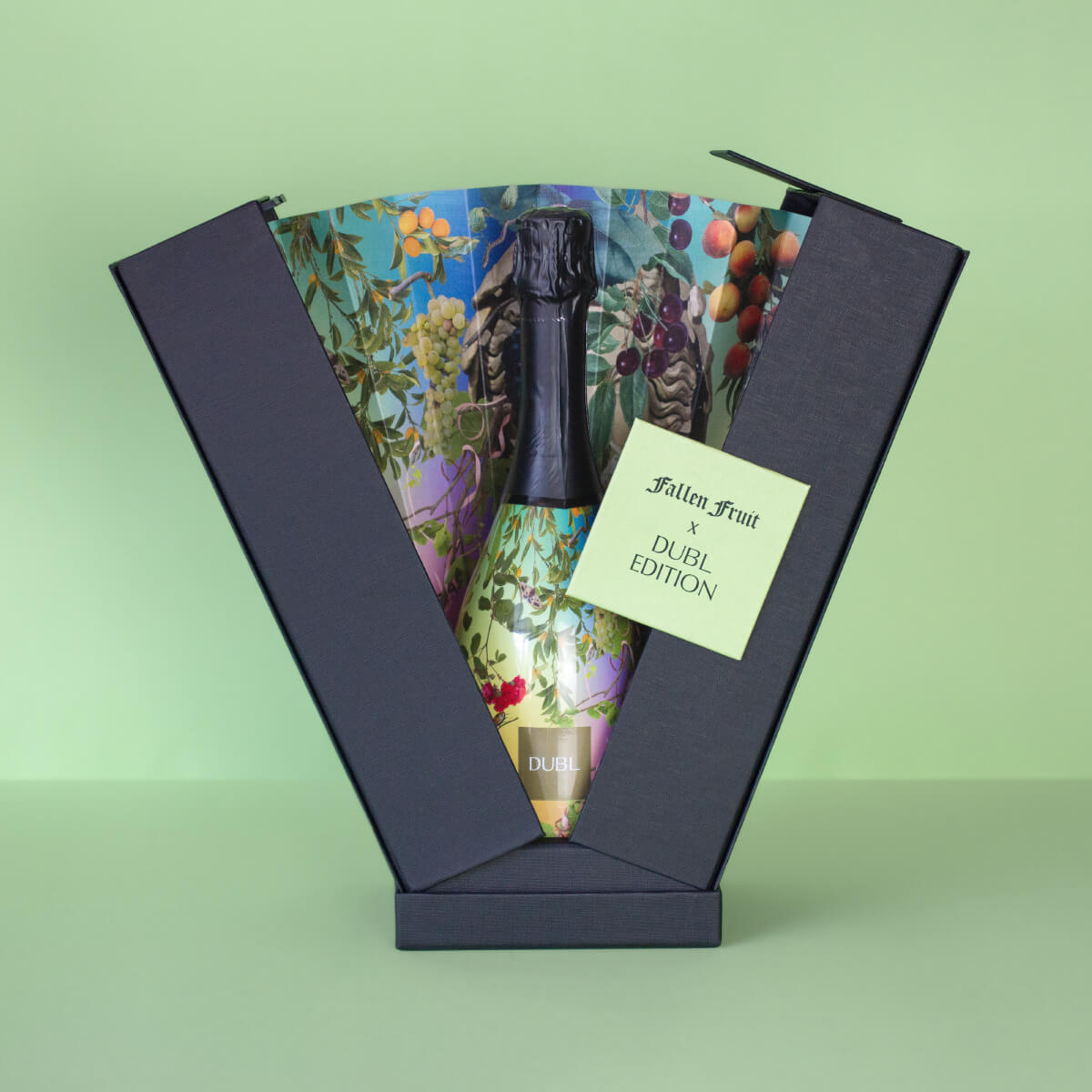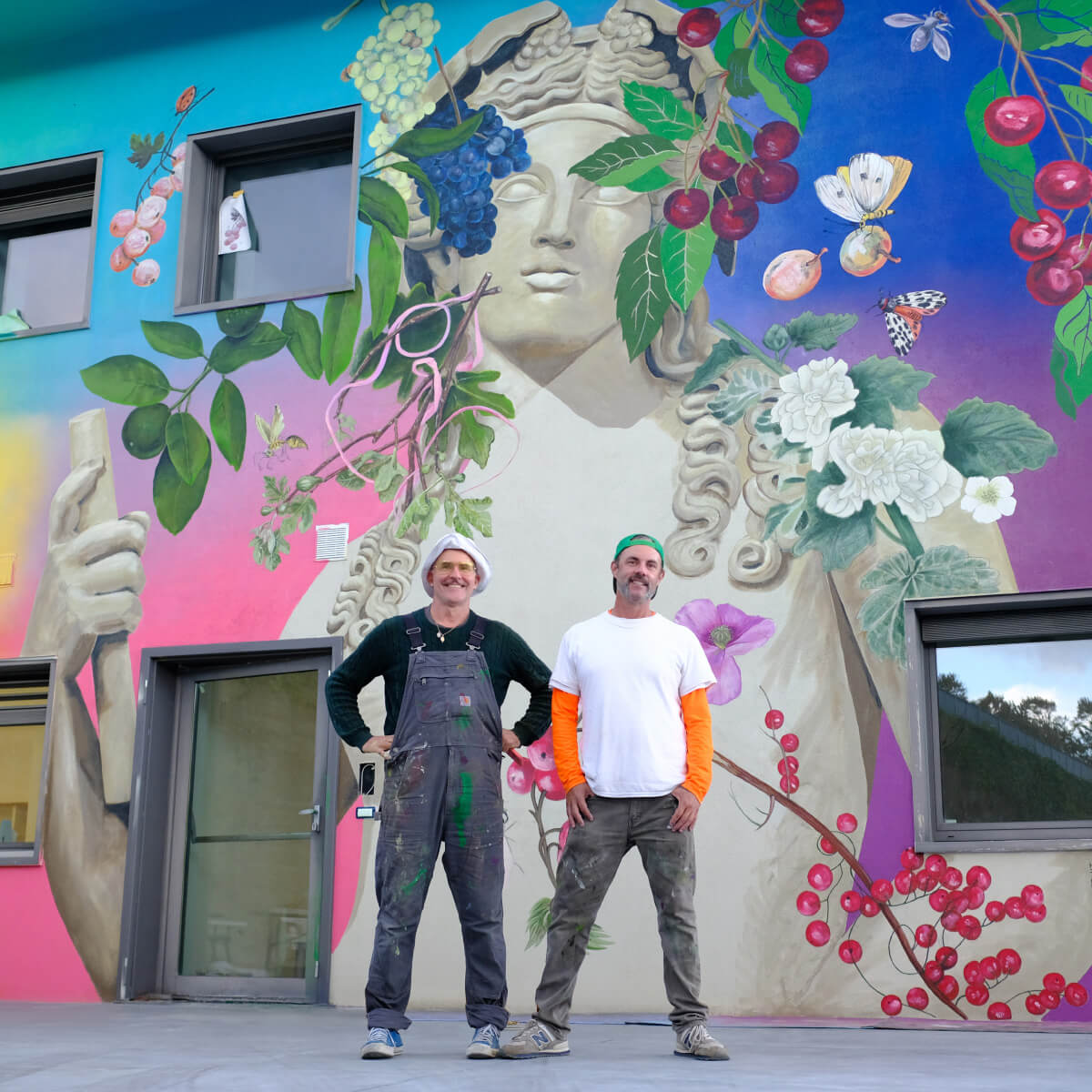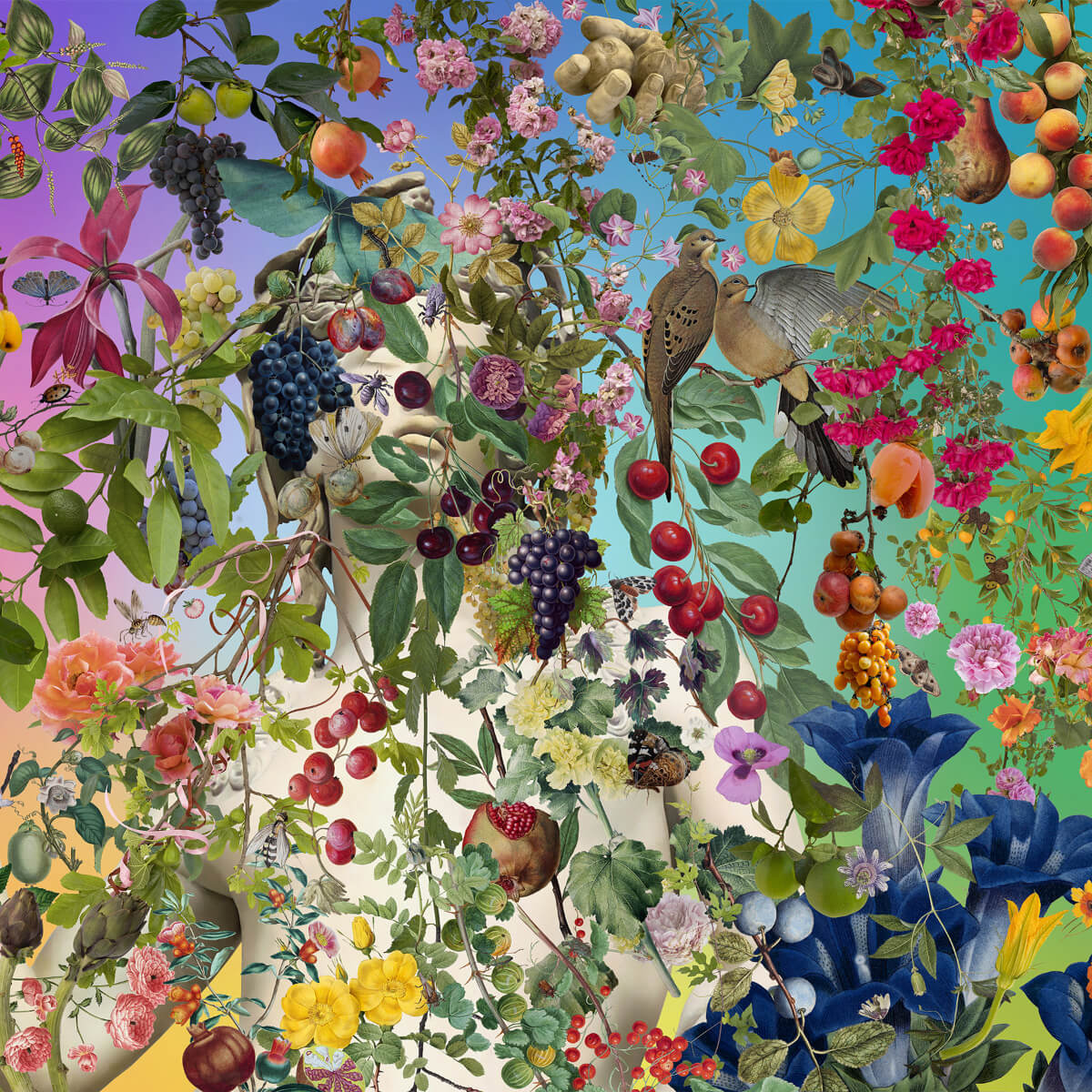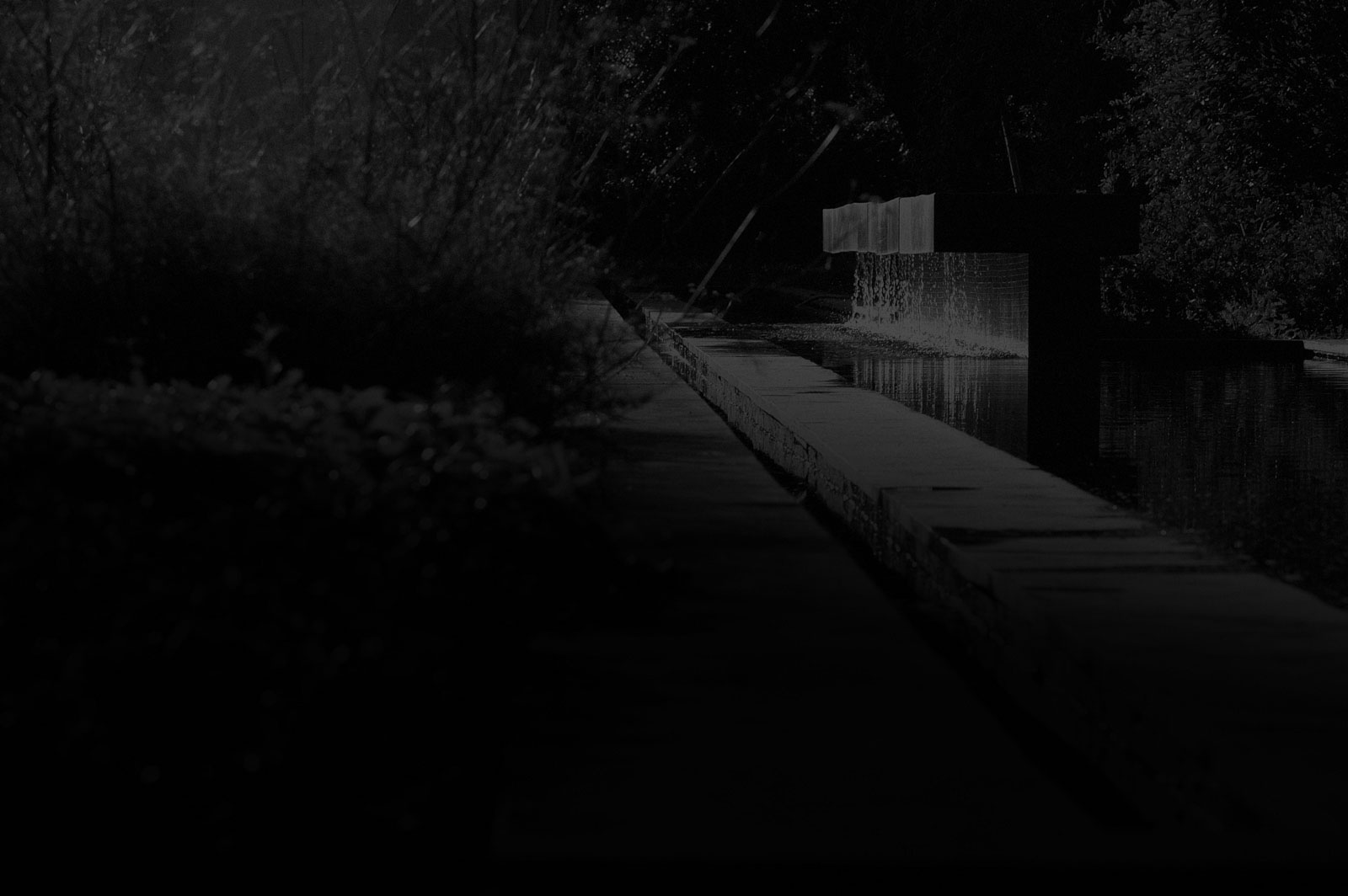
Feudi di San Gregorio
Between the world of art and that of wine
One of the cornerstones of Feudi di San Gregorio’s vision is the belief that a bottle of wine and a work of art share the same creative process.
The love and passion infused in the cultivation of the vines, the effort in the picking of the grapes and the patient waiting for the wine to age, endow every one of our bottles with a personality of its own, transforming it into an authentic artwork.
These are the same sentiments and emotions guiding artists in their creative process in making a sculpture, a photograph, a painting or an installation.
In the light of this approach, Feudi di San Gregorio establishes collaborations with affirmed artists and young talents, towards cultivating a fruitful and ongoing exchange of knowledge and creativity between the world of art and that of wine.

Less is more
Massimo Vignelli
Italian designer living in New York, Massimo Vignelli was one of the greatest designers of our times.
Vignelli’s works have in fact been displayed at the MoMA and in countless other design and contemporary art museums.
"I like design to be visually powerful, intellectually elegant, and above all timeless".
Since 2001, the creative genius of Massimo Vignelli – the designer who has provided a visionary but rigorous graphic translation of our winery’s identity – has designed all the revolutionary Feudi di San Gregorio labels, offering a contemporary interpretation of our great local winemaking tradition.
Attention to detail – that can be appreciated in the colour palette, definition of the mosaics, and the hot stamped gold nuances –, paired with a wine label format that is much smaller than most traditional labels, have earned our bottles international renown.
Over the years, our collaboration with Vignelli has gradually expanded to our brand identity as a whole covering the winery’s interiors, fair stands, publications, and packagings for the FeudiStudi wines.
Since 2001, the creative genius of Massimo Vignelli – the designer who has provided a visionary but rigorous graphic translation of our winery’s identity – has designed all the revolutionary Feudi di San Gregorio labels, offering a contemporary interpretation of our great local winemaking tradition.
Attention to detail – that can be appreciated in the colour palette, definition of the mosaics, and the hot stamped gold nuances –, paired with a wine label format that is much smaller than most traditional labels, have earned our bottles international renown.
Over the years, our collaboration with Vignelli has gradually expanded to our brand identity as a whole covering the winery’s interiors, fair stands, publications, and packagings for the FeudiStudi wines.

DUBL ESSE oblige
Fabio Novembre
Internationally renowned and visionary designer.
This is how Novembre defines himself:
"As though I were pollen, I let myself go with the wind, convinced I’m able to seduce everything that surrounds me".
To develop the new frontier of our DUBL project – our limited edition DUBL and Esse selections – we turned to Fabio Novembre and his creative genius. For DUBL ESSE Fabio envisioned a design where a minimalist aesthetic research and metaphysical imagery meet in a tight weave of references, relations, interconnections and similarities forming a “continuous source of life and inspiration”.
Feudi di San Gregorio is a winery entitled to a Saint, Pope Gregory I, and this is where Novembre drew inspiration for this project. As the designer himself likes to remember, images of saints “constellated his childhood and colonised his mind” for as a child he liked to collect holy cards instead of the usual football player stickers. Novembre’s imagination was in fact captured by a particular element of St Gregory’s iconography, the Papal tiara which he used as starting point for his bottle design: the three bands that gradually reduce in size echo the structure of the Pope’s tiara. The project was presented in Milan, April 2016.
To develop the new frontier of our DUBL project – our limited edition DUBL and Esse selections – we turned to Fabio Novembre and his creative genius. For DUBL ESSE Fabio envisioned a design where a minimalist aesthetic research and metaphysical imagery meet in a tight weave of references, relations, interconnections and similarities forming a “continuous source of life and inspiration”.
Feudi di San Gregorio is a winery entitled to a Saint, Pope Gregory I, and this is where Novembre drew inspiration for this project. As the designer himself likes to remember, images of saints “constellated his childhood and colonised his mind” for as a child he liked to collect holy cards instead of the usual football player stickers. Novembre’s imagination was in fact captured by a particular element of St Gregory’s iconography, the Papal tiara which he used as starting point for his bottle design: the three bands that gradually reduce in size echo the structure of the Pope’s tiara. The project was presented in Milan, April 2016.

Signature winery
Hikaru Mori
and Maurizio Zito
Hikaru Mori was born in Sapporo, Japan. After studying architecture, she moved to Milan and married Italian fellow architect Maurizio Zito from Irpinia. Besides carrying out some important architectural projects, Hikaru Mori has also signed numerous designs for Italian and international brands.
In 2001 we decided to embark on the project of building a new winery: we wanted to create a space that was one of a kind, combining our taste for tradition with our contemporary vocation, aiming for a project capable of providing suitable spaces for top-quality wine production yet staying true to the history of our company and of its territory. We envisioned a structure with minimal environmental impact and vast gardens inspired by our tradition. One area at the centre of the premises would become the winery’s restaurant – Marennà (Michelin Star since 2009) – a restaurant dedicated to a contemporary reinterpretation of the typical local cuisine of Campania and Irpinia.
For such a multi-faceted and complex project we decided to rely on internationally acclaimed professionals: the great Massimo Vignelli and his wife Lella who designed all the interiors, and also, most importantly, Japanese architect Hikaru Mori and her husband Maurizio Zito for the design of the winery itself. Hikaru presented us with a project for an essential winery, reusing pre-existent structures and with high-impact interiors and outdoor spaces.
Feudi di San Gregorio was one of the first Italian signature wineries – and due to its extraordinary architectural value the project was exhibited twice at the Venice Biennale.
In 2001 we decided to embark on the project of building a new winery: we wanted to create a space that was one of a kind, combining our taste for tradition with our contemporary vocation, aiming for a project capable of providing suitable spaces for top-quality wine production yet staying true to the history of our company and of its territory. We envisioned a structure with minimal environmental impact and vast gardens inspired by our tradition. One area at the centre of the premises would become the winery’s restaurant – Marennà (Michelin Star since 2009) – a restaurant dedicated to a contemporary reinterpretation of the typical local cuisine of Campania and Irpinia.
For such a multi-faceted and complex project we decided to rely on internationally acclaimed professionals: the great Massimo Vignelli and his wife Lella who designed all the interiors, and also, most importantly, Japanese architect Hikaru Mori and her husband Maurizio Zito for the design of the winery itself. Hikaru presented us with a project for an essential winery, reusing pre-existent structures and with high-impact interiors and outdoor spaces.
Feudi di San Gregorio was one of the first Italian signature wineries – and due to its extraordinary architectural value the project was exhibited twice at the Venice Biennale.
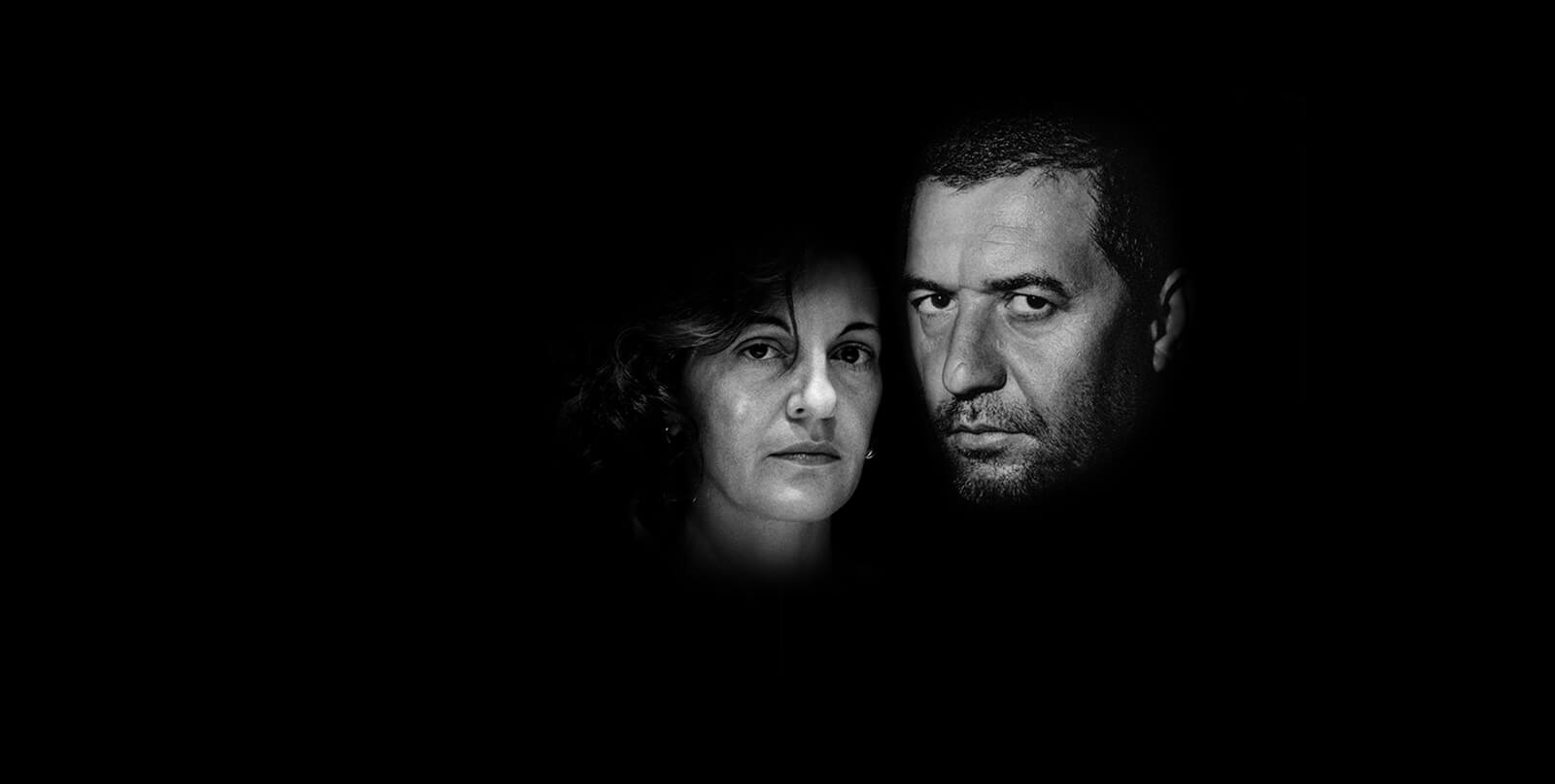
Colature (Wine Tears)
Vedovamazzei
Stella and Simeone are two authentic Neapolitan artists endowed with extraordinary creativity.
At present, they work in Milan and their projects are exhibited worldwide.
Vedovamazzei is the name written on a plaque they found in Naples.
“Vedovamazzei is a woman but also a man. Vedova means widow while Mazzei is the surname of her late husband. The vedova, the widow, has no surname. Let’s say this name is our first work, the one with which we stepped into the art world”.
Winemaking is an art and this is why art is so important at Feudi di San Gregorio.
Contemporary art filters and looks at the past with the eyes of today, constantly projecting itself into the future. This how we want our winery to be and how we understand our projects. In 2011, in collaboration with Beatrice Bertini (owner of Roman art gallery www.exelettrofonica.com), Feudi di San Gregorio organized a workshop involving some of Campania’s leading contemporary artists.
Our purpose was to initiate a collection of contemporary Campanian art, and to this purpose, participants were asked to develop a project inspired by their visit to our winery and related to one of our wines. We started with Vedovamazzei and their work Colature, a project inspired by the so-called “wine tears” running down the sides of a glass of wine and by the colours of the Feudi di San Gregorio and DUBL labels.
Winemaking is an art and this is why art is so important at Feudi di San Gregorio.
Contemporary art filters and looks at the past with the eyes of today, constantly projecting itself into the future. This how we want our winery to be and how we understand our projects. In 2011, in collaboration with Beatrice Bertini (owner of Roman art gallery www.exelettrofonica.com), Feudi di San Gregorio organized a workshop involving some of Campania’s leading contemporary artists.
Our purpose was to initiate a collection of contemporary Campanian art, and to this purpose, participants were asked to develop a project inspired by their visit to our winery and related to one of our wines. We started with Vedovamazzei and their work Colature, a project inspired by the so-called “wine tears” running down the sides of a glass of wine and by the colours of the Feudi di San Gregorio and DUBL labels.
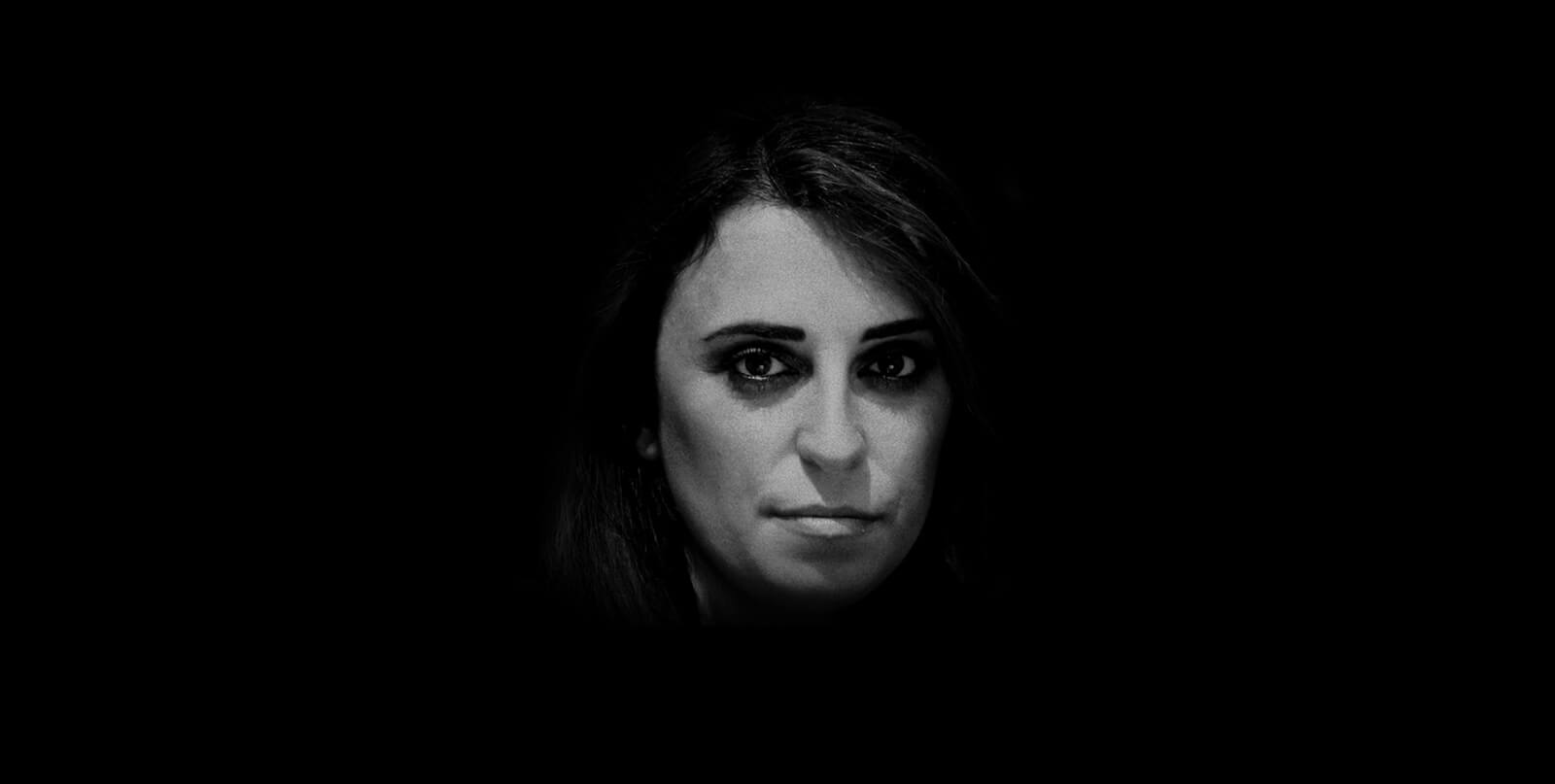
Installations
Marinella Senatore
Marinella Senatore (Cava dei Tirreni, Salerno, 1977) lives and works in London and Berlin. Her research revolves around the public’s active participation in the creative process. In her work she employs various media, from installation to video, drawing, and performance, establishing a dialogue between oral narration and socio-cultural structures.
The young and eclectic Campanian artist Marinella Senatore’s project was a exhibition in the Feudi di San Gregorio winery.
Her six watercolours, painted with a play of chiaroscuro, illustrate the different stages of the construction of the new winery, from the excavation to the actual building site, describing the passing of the seasons and the original structure before Hikaru Mori and Maurizio Zito’s architectural intervention.
The young and eclectic Campanian artist Marinella Senatore’s project was a exhibition in the Feudi di San Gregorio winery.
Her six watercolours, painted with a play of chiaroscuro, illustrate the different stages of the construction of the new winery, from the excavation to the actual building site, describing the passing of the seasons and the original structure before Hikaru Mori and Maurizio Zito’s architectural intervention.

Imaginations
Mimmo Jodice
From Naples, Mimmo Jodice is one of the masters of photography of our times. He is an artist aware of social problems and who feels a strong connection with his land.
The visual language he uses is unique and always open to new technical experimentations.
In 2013, we entrusted Mimmo Jodice to create a permanent installation inside our winery to tell the story of the spirit of Feudi di San Gregorio, as seen through his eyes and his camera. This work in turn led to another project with a wider scope: the creation of a limited edition of Serpico 2010: 1000 bottles with labels with a superb photo of one of our historical Aglianico vineyards.
The proceeds from the sale of these bottles was entirely given to Father Antonio Loffredo to finance projects for social development through art in the Rione Sanità in Naples.
In 2013, we entrusted Mimmo Jodice to create a permanent installation inside our winery to tell the story of the spirit of Feudi di San Gregorio, as seen through his eyes and his camera. This work in turn led to another project with a wider scope: the creation of a limited edition of Serpico 2010: 1000 bottles with labels with a superb photo of one of our historical Aglianico vineyards.
The proceeds from the sale of these bottles was entirely given to Father Antonio Loffredo to finance projects for social development through art in the Rione Sanità in Naples.

“Vine whisperers”
Simonit&Sirch
Marco Simonit and Pierpaolo Sirch are “vine whisperers”.
Marco today is head of Preparatori D’Uva, a team devoted to spreading the Simonit&Sirch know-how with specific vine pruning courses.
Pierpaolo has a long-standing collaboration with Feudi di San Gregorio, having worked in the winery’s production area since 2003 and as its chief executive officer since 2009.
Marco and Pierpaolo are two professionals committed to the safeguard of unique territories, such as Irpinia, and to the protection and preservation of their exceptional ampelographic heritage.
For over 15 years, the Simonit&Sirch team has been working with Professor Scienza of the University of Milan, studying Irpinia’s ancient vineyards (from 70/80 to over 200 years old), their genetics and their reproduction, carrying out a painstaking and in-depth study that has taught us how important it is look to the past in order to build our future. This is how Serpico and Sirica were born: Serpico, condensing the fruit of centuries-old vines of Aglianico, and Sirica, the product of the genetic reproduction of three “ancestor” vines of a local Campanian variety believed to be extinct.
Over the years, our mission has been that of acquiring land that is home to centuries-old vines; we are particularly proud of our Serpico garden vineyard – a land growing over two hundred ancestor-vines that survived the grape phylloxera and which today offer a unique and truly magnificent sight.
It is as if these great “ancestor” vines were like caring fathers encouraging their offspring to take the right path in life.
Marco and Pierpaolo are two professionals committed to the safeguard of unique territories, such as Irpinia, and to the protection and preservation of their exceptional ampelographic heritage.
For over 15 years, the Simonit&Sirch team has been working with Professor Scienza of the University of Milan, studying Irpinia’s ancient vineyards (from 70/80 to over 200 years old), their genetics and their reproduction, carrying out a painstaking and in-depth study that has taught us how important it is look to the past in order to build our future. This is how Serpico and Sirica were born: Serpico, condensing the fruit of centuries-old vines of Aglianico, and Sirica, the product of the genetic reproduction of three “ancestor” vines of a local Campanian variety believed to be extinct.
Over the years, our mission has been that of acquiring land that is home to centuries-old vines; we are particularly proud of our Serpico garden vineyard – a land growing over two hundred ancestor-vines that survived the grape phylloxera and which today offer a unique and truly magnificent sight.
It is as if these great “ancestor” vines were like caring fathers encouraging their offspring to take the right path in life.
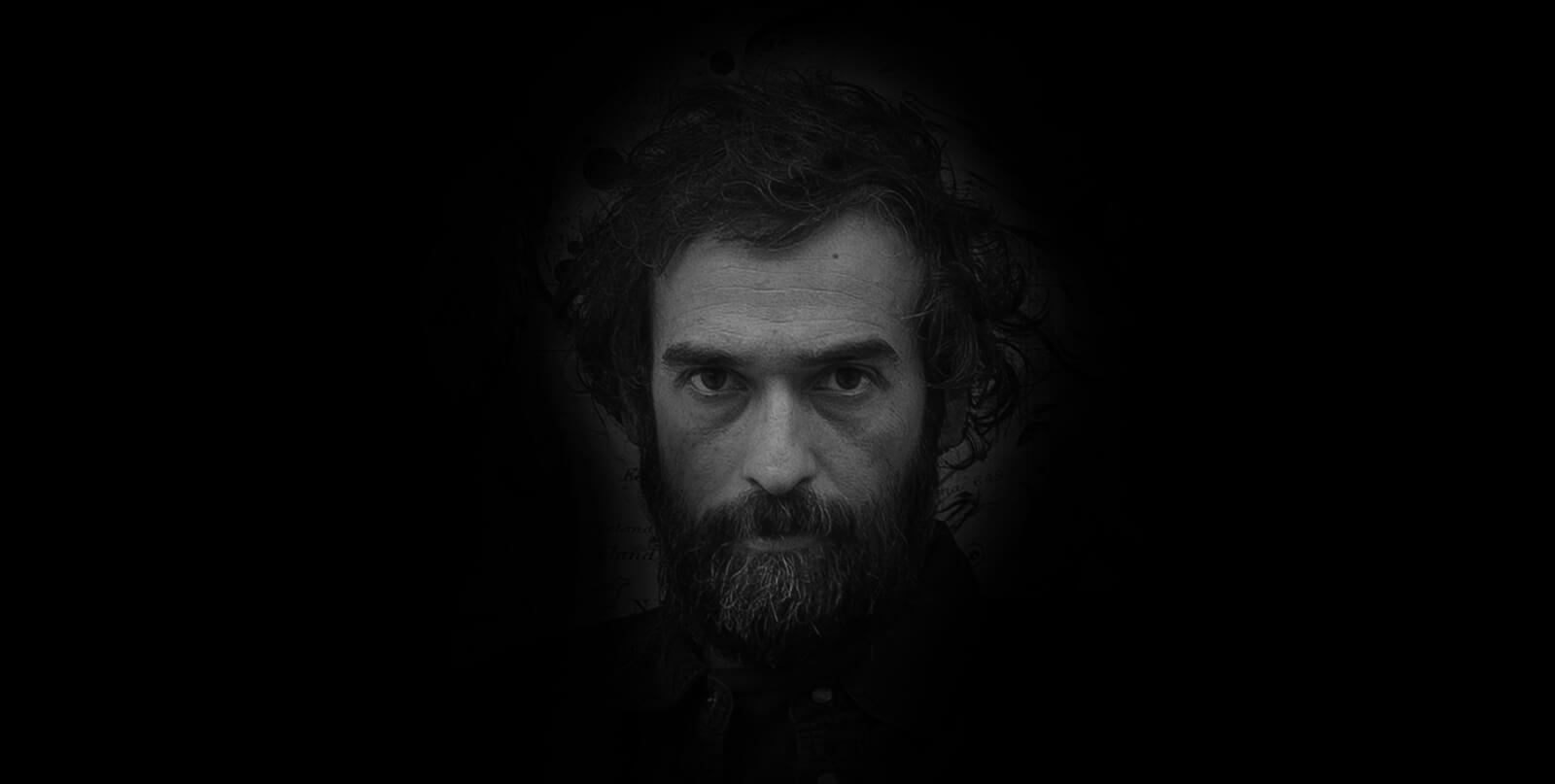
IL CANTO DELLA TERRA
Pietro Ruffo
Pietro Ruffo is one of Italy’s most highly praised young artists.
In 2022, he has chosen to recount the lifecycle of wine on the surface of an amphora, used since ancient times for vinification and ageing.
The tale of cellar operations thus merges with the community where it all takes place and the territory where it isset, Irpinia, cradle of food and wine wisdom and culture.
Based on his design and an expression of the artist's unmistakable style, "Il canto della terra" will remain on display to be admired by the more than 20,000 people who visit the winery each year.
The artist's distinctive style is also found in the limited-edition label for the San Gennaro Foundation, which will enhance 1,998 bottles of DUBL +, the classic Greco - based method that the company has been successfully experimenting with for more than 15 years.
Pietro Ruffo drew inspiration from his CONSTELLATI ONS series - watercolour and cut - outs on paper laid on canvas - in which he superimposes two maps, one terrestrial the other celestial, with which to explore the great themes of universal history.
In 2022, he has chosen to recount the lifecycle of wine on the surface of an amphora, used since ancient times for vinification and ageing.
The tale of cellar operations thus merges with the community where it all takes place and the territory where it isset, Irpinia, cradle of food and wine wisdom and culture.
Based on his design and an expression of the artist's unmistakable style, "Il canto della terra" will remain on display to be admired by the more than 20,000 people who visit the winery each year.
The artist's distinctive style is also found in the limited-edition label for the San Gennaro Foundation, which will enhance 1,998 bottles of DUBL +, the classic Greco - based method that the company has been successfully experimenting with for more than 15 years.
Pietro Ruffo drew inspiration from his CONSTELLATI ONS series - watercolour and cut - outs on paper laid on canvas - in which he superimposes two maps, one terrestrial the other celestial, with which to explore the great themes of universal history.

Fallen Fruit, made up of artist duo David Allen Burns and Austin Young, is a collaborative art project that began in Los Angeles with creating maps of public fruit: the fruit trees growing on or over public property.
Fallen Fruit
The work of Fallen Fruit includes photographic portraits, experimental documentary videos, and site-specific installation artworks in public space for everyone to share. Fallen Fruit invites you to experience your City as a fruitful place, to collectively re-imagine the function of public participation and urban space, and to explore the meaning of community through creating and sharing new and abundant resources.
“A portrait of Dionysus” is the title of the work of art created with spray paint by the two artists and which populates the entire facade of the new guest house Botanica, located inside Borgo San Gregorio (https://youtu.be/UP90cVranvQ).
The project continues inside the building, welcoming visitors with a colourful wallpaper that embark them
into a visionary world of flowers, colours and fruits.
The Californian duo signs the graphic project with their usual colourful and baroque approach, including a tribute to the god of wine and pleasure on the northwest corner of the building.
The statuesque figure, a representation of a 2nd century marble sculpture, is adorned with hand-painted flora and fauna from the region: Grapes, Cherries, Peaches, Plums, Lemons.
In addition, the artists have exclusively designed “The Vanity of Dionysus”, a bottle of DUBL Brut Edition, our Classic Method sparkling wine, in a limited edition for the San Gennaro Foundation.
Available in 3.030 bottles, the proceeds will be entirely donated to the Foundation led by Father Antonio Loffredo and to his social development project for the district of Naples named Sanità.
“A portrait of Dionysus” is the title of the work of art created with spray paint by the two artists and which populates the entire facade of the new guest house Botanica, located inside Borgo San Gregorio (https://youtu.be/UP90cVranvQ).
The project continues inside the building, welcoming visitors with a colourful wallpaper that embark them
into a visionary world of flowers, colours and fruits.
The Californian duo signs the graphic project with their usual colourful and baroque approach, including a tribute to the god of wine and pleasure on the northwest corner of the building.
The statuesque figure, a representation of a 2nd century marble sculpture, is adorned with hand-painted flora and fauna from the region: Grapes, Cherries, Peaches, Plums, Lemons.
In addition, the artists have exclusively designed “The Vanity of Dionysus”, a bottle of DUBL Brut Edition, our Classic Method sparkling wine, in a limited edition for the San Gennaro Foundation.
Available in 3.030 bottles, the proceeds will be entirely donated to the Foundation led by Father Antonio Loffredo and to his social development project for the district of Naples named Sanità.
